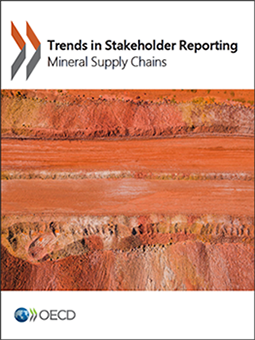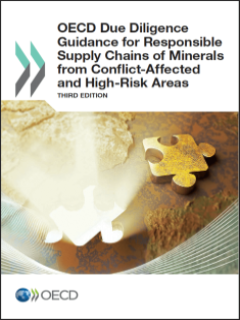Trends in Stakeholder Reporting: Mineral Supply Chains

Trends in Stakeholder Reporting: Mineral Supply Chains
Risks of contributing to conflict financing, human rights abuses, and financial crime are regularly reported across different mineral supply chains by civil society, media, government, and other stakeholders. The OECD Due Diligence Guidance for Responsible Supply Chains of Minerals from Conflict-Affect and High-Risk Areas recommends that companies in all mineral supply chains and in all geographies take steps to identify and address these risks. This paper was written to provide examples of how these risks are publically reported and to understand broader trends in reporting.
To develop this paper, the OECD, with the support of TDI Sustainability, collected over 1200 reports in six languages through a combination of automated web-scraping and desk research. The reports, dating from 2017 to 2019, cover 40 different mineral supply chains. The complete categorised list of reports, including brief summaries and links to further reading are available in an accompanying excel document linked below.
This information can be useful for governments to better understand where to focus enforcement or development aid, companies initiating or expanding their due diligence process, and civil society to help focus or re-direct research and campaigning. While the numbers of reports, taken alone, are not an accurate measurement of risk associated with a specific mineral or geography, they are a critical information input to be considered in light of other contextual information. These reports also provide important threads for companies to pull and raise specific due diligence questions. |
Published on 28 April 2021 |
|
The OECD Due Diligence Guidance for Responsible Mineral Supply Chains
The OECD Due Diligence Guidance for Responsible Supply Chains of Minerals from Conflict-Affected and High-Risk Areas clarifies how companies can identify and better manage risks throughout the entire mineral supply chain, from miners, local exporters and mineral processors to the manufacturing and brand-name companies that use these minerals in their products.
How does the Guidance apply to you? Consult the interactive Due Diligence Guidance!
|
|
Related Documents



